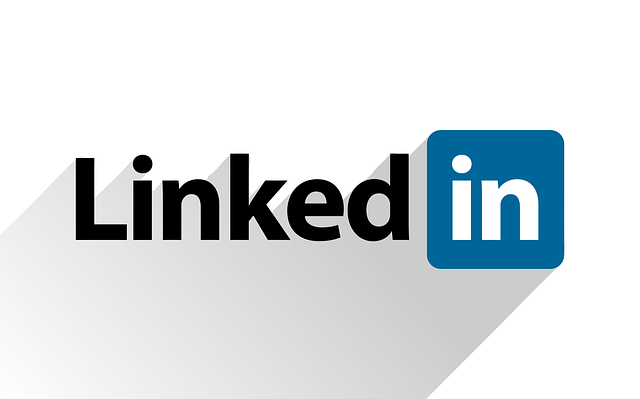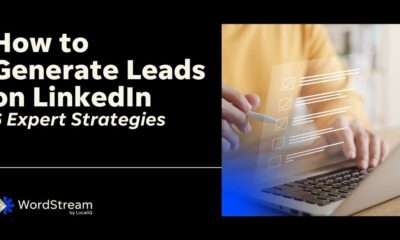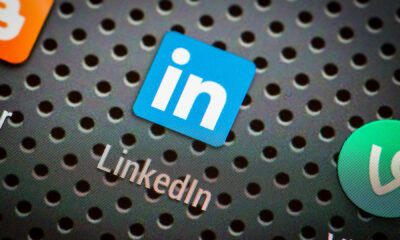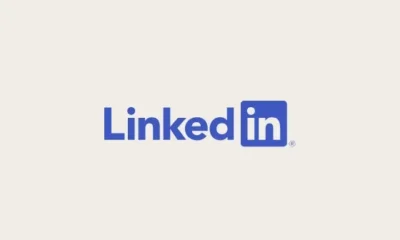B2B Lead Generation on LinkedIn: The Whats, Whys, and Hows

Many believe that LinkedIn is the social network for B2B marketing. However, getting the results you want from the platform is not as easy or straightforward as you’d think. Filling out your company page and sending out a few invitations to people to like your page isn’t enough for the magic to happen.
LinkedIn is a social media platform dedicated to connecting the world’s professionals. If you want to generate valuable B2B leads for your business, you need to put in the work. In this post, we’ll show you some tried and tested ways to use LinkedIn for B2B lead generation.
Benefits of using LinkedIn for lead generation
Before we get into it, here are the benefits of using LinkedIn for lead generation:
- Decision-makers – LinkedIn is the most-used social media platform among senior-level influencers, decision-makers, and employees of Fortune 500 companies, which means that your target audience is most likely already there.
- The place for professionals – The average LinkedIn user might use the platform to stay informed about what is happening in their company, industry and network. If your company is offering a solution tailored to their needs, LinkedIn is probably the place where you can attract that attention and get the sale.
- Active user base – Out of 700 million total users, over half of them — around 310 million users — use the platform every month. This should give you a great opportunity to engage with them regularly.
- B2B targeting audience — LinkedIn advertising platform’s ads allow you to get granular about the audience you want to target. Even though some of the competitors, such as Facebook, allow you to target users by their job title or current employer, reaching the ideal target audience on LinkedIn is much easier, as it features a lot of targeting options.
LinkedIn lead generation strategy
Now that we have covered why you should use LinkedIn to hunt leads, here are the tactics to include in your LinkedIn lead generation strategy.
Use your LinkedIn company page to generate B2B leads
If you want to generate B2B leads on LinkedIn you must stop using your company page as a page to simply display your business in the digital space. Instead, what you want to do is turn your company page into a lead generation page that will inspire people to engage with your company page and your brand.
You need to show what you can offer to your audience. Make sure that your page clearly shows to visitors an offer right as they enter your page. This is the first thing your visitors will see which is why it is important to grab their attention.
Create showcase pages to segment your LinkedIn leads
To promote your different products, brands, events, or any other aspects of your business to a specific audience on LinkedIn, use LinkedIn Showcase Pages.
Think of them as affiliated pages — you can use them to create and promote content specific to each of your target audiences. They can help you segment your B2B leads on LinkedIn more efficiently and then use those pages to target the audience with content that is relevant to them.
Use the LinkedIn groups feature
One of the best ways to generate leads on LinkedIn is to connect and engage with people and build your presence on the network. In addition to having a large network of connections, joining LinkedIn groups is a great way to connect with people, as high-quality groups are the perfect places to get noticed.
In addition to joining various LinkedIn groups, you should also consider creating groups of your own. However, you should not do this right away, instead, wait until you have built a solid collection of high-quality connections first. Only when you establish yourself as a thought leader and an authority in your industry can you start thinking about creating a group. Your LinkedIn group should be a trustworthy source of valuable knowledge and discussion.
Build quality connections – lots of them
Having plenty of connections on LinkedIn is important. However, you need to ensure that your connections are of a certain quality, as that is the only way you will be able to actually generate leads. Low-quality connections are hardly going to become B2B leads.
Getting leads starts with LinkedIn prospecting and prospecting can only happen if you have relevant connections. The more relevant your LinkedIn connections are, the more likely they will be to share and engage with your content. This will allow you to grow your presence on LinkedIn and then use your network to generate leads.
Create and share content daily
If you want to achieve anything on LinkedIn these days, you need to be active. Take some time out of your busy day and create and share content that will bring value to your connections.
Even if you do not have the time to create content, sharing high-quality articles, images, and videos while adding your thoughts to them will give you a medium to express your company’s position and engage with users.
If you do have the time to create content on LinkedIn — you should definitely go for it. Creating your own valuable and share-worthy content on LinkedIn will help people take notice of what you have to say and it can help you generate leads or just buzz about you and your business.
Businesses want to work with other businesses that have expert knowledge and insight into the industry. These days things change quickly in almost every industry and companies want to listen to experts that can help them prepare for what is next. Make sure that you are that expert.
Whatever you do — always add value
In the end, the most important thing you need to do is to ensure that every piece of content you write or share on LinkedIn actually brings some kind of value to the readers. Keep this in mind when you are working on your LinkedIn lead generation strategy.
Whenever you are about to write or share a post, ask yourself what value this is going to bring to your connections, the group you are sharing to or any other audiences you are targeting with the content. If you cannot answer this question with confidence, you should rethink if that piece of content is strong enough.
If you want to build an organic presence and generate B2B leads for your business, your content does have to bring actual value to your audience.
Final thoughts
Over the years, LinkedIn has built a reputation as the ultimate source of B2B leads because of one major reason — it is the best network that connects professionals from all over the world. While yes, other networks also work for a certain niche or geographic area, LinkedIn is the place where all professionals go. Most of them are interested in doing business in some form or another.
If you want to stand out on LinkedIn, you have to be different from the millions of other businesses that are using the platform as their marketing channel. To be successful in generating B2B leads on LinkedIn, you need a lot of hard work and patience and you will get the results that you want.
3 ways to recruit engineers who fly under LinkedIn’s radar

Sergiu Matei is the founder of Index, a platform that helps teams find and hire world-class remote software developers and be globally compliant from the get-go.
We’ve recently been bombarded with news of job surpluses, including predictions that the number of software developer roles will increase 22% by 2030. With the need for nearly a quarter more developers, recruiters are having to scale their search and look under the stones that have previously been left unturned.
It’s easy to assume in the digital age that job candidates are waiting at the end of a mouse click, but the online hiring space isn’t as encompassing as we think. Less than 10% of people on LinkedIn don’t have an education that surpasses high school, despite 87% of developers having taught themselves a new coding language, framework or tool without formal education.
People who live in emerging markets use LinkedIn less frequently, even though these locations harbor some of the world’s most promising tech talent.
Some developers choose not to have a LinkedIn account because it feels like another social media channel to maintain. This aversion makes sense considering engineers focus more on hard skills rather than their online personae.
This week, LinkedIn announced it would start offering its services in Hindi, which will allow the service to reach 600 million people globally. People who live in emerging markets use the platform less frequently, even though these locations harbor some of the world’s most promising tech talent.
Companies can’t let how they’ve hired in the past influence their approach today — doing so means missing not just the quantity of developers, but the quality and diversity of them. The remote revolution didn’t just broaden where we can recruit, it’s expanded who we can bring on board. With that in mind, these are the best ways to tap into the hidden developer gems.
Open up your content, chats and code
No recruiter should think of hiring a developer as the same process as selling a product or service. As Adam DuVander explains in “Developer Marketing Does Not Exist,” resonating with developers requires more education and less promotion than the majority of companies currently provide.
The content you publish can organically pique people’s interest, as long as it has a strategic purpose and doesn’t overly mention your brand or services; for example, blog posts about upskilling, industry trends and exclusive data insights. You could also host events like webinars, round tables, quizzes and hackathons that are less for recruitment purposes and more to showcase the team and culture. Don’t be afraid to be lighthearted with your content, either. Memes, GIFs and videos are a great way to demonstrate that you don’t take yourself too seriously. And once you remove the promotional positioning, developers in the shadows will start to come forward.
People Buy People On LinkedIn Not Companies: Here’s Why

On LinkedIn, people buy into other people, not companies. LinkedIn is all about you, the leader. When people make decisions, it is based on who you are, how they feel about you and other emotional, sometimes intangible feelings. This is true for social media and in real life.
Gut reactions, good vibe, rapport — people build up a trust with you, or not as the case may be. That’s why authenticity is key. People will find out if you’re fake. And since people on LinkedIn buy into other people, that’s why the best course to get more business is to market your company through your personal page on LinkedIn.
I’ve written before about what I call “the Richard Branson effect,” which can easily be replaced with the Elon Musk effect, the Bill Gates effect or any other public figure in business. These types of company leaders have more engagement and followers on LinkedIn than their respective companies. One hundred times more people follow the leader and founder of Virgin Atlantic, Richard Branson, than the company itself.
People buy people. People follow people, not companies. Even when leaders like Michael Dell have fewer followers than their company page, they actually have more engagement levels for their posts.
As another example, if you look at the Microsoft company page on LinkedIn (and bearing in mind that they own LinkedIn), the company has 14 million followers, but sometimes its posts get literally zero comments. They tend to be boring company updates about diversity, the environment, Azure, the Surface products. Who cares?
So, you have to wonder, if Microsoft often gets such little engagement on LinkedIn, then how do small companies have a chance? You have to keep in mind that when the CEO of Microsoft, Satya Nadella, posts, he routinely gets hundreds of thousands of engagements. People buy into Satya, and when he talks about Microsoft, people listen.
They see more authenticity in Satya. It feels more personal. You can’t take the company to the pub, cafe or restaurant but you can take the CEO or Founder.
It’s often the best place to do business in a bar. This is where the real action happens and where the real “you” comes out. You have a drink, you relax, you build a rapport and you share. You then start trusting one another and that’s how business is done. You can’t take a company out for a drink.
I closed my physical office in Singapore, and I have all my meetings at the W Hotel’s WooBar. I invite people to come and meet me there as it’s a break for them away from their home or physical office in the business district.
Their decision of whether to outsource to my company is often based on how well they get along with me. It can of course go both ways. The ones who enjoy my sometimes polarizing personal brand often become my clients. The whole process is based on social selling, not hard selling.
Build a relationship socially with potential clients. Share the good, bad and ugly about yourself on LinkedIn. You then gain permission in other people’s view to share your company through your personal page on LinkedIn. People will come to trust you and buy your service because of you.
Ultimately, selling is about people, trust, rapport and relationships, and you can’t do that through a company website or a company page on LinkedIn; you can only do it through you and your personal page and brand.
So, my advice is don’t waste time on your LinkedIn company page, and instead focus on your LinkedIn personal page to see results. The examples of successful business personalities speak for themselves.
Forbes Business Council is the foremost growth and networking organization for business owners and leaders. Do I qualify?
8 Tools that are a Must for LinkedIn Automation – Times News Express

When it comes to social media platforms, LinkedIn might come across as Facebook’s older, more responsible, and infinitely more boring sibling. When it comes to functionality, however, it is an invaluable resource to professionals all across the globe. As of 2021, LinkedIn has more than 774 million registered members from more than 200 countries, and savvy HR and marketing-minded professionals would be wise not to overlook the vast array of resources it offers.
From networking to brand building, to publishing, LinkedIn can provide a multitude of services. However, all of these options and the wealth of data can potentially hamper efficiency and productivity.
Here are the seven must-have Linkedin automation tools that will help get the results you want in less time.
Lead generating software that responds at the click of a button is good. Software that runs in the background while you accomplish tasks elsewhere is even better. For example, Castanet can manage single or multiple LinkedIn profiles and continuously run to automatically generate appointment requests, connection invitations, and skill endorsements.
Searches can be precisely filtered by LinkedIn profile characteristics in order to seek out quality clients who are more likely to have an interest in your company and the products or services you offer. When you have a connection with your clients, it means better leads and less wasted time on undesirable prospects.
Dux-Soup is a sales tool focused on automated lead generation. Based upon the parameters you set, it automatically contacts sales prospects selected on LinkedIn. It can also send direct messages, endorse skills, send personalized connection requests. A handy feature is its ability to schedule multiple, delayed, personalized messages.
Crystal is an excellent source of information for both sales and HR professionals. It is able to mine data from LinkedIn profiles to predict communication styles and personality types and therefore give you a better idea of how best to approach customers, coworkers, and prospective employees.
Using the DISC personality method, Crystal also offers various training courses to show you how to implement your acquired data into the most effective processes for team building, hiring, and sales generation.
LeadFeeder uses web tracking technology to identify what companies visit your website and are potentially interested in your services. It is beneficial for gauging the effectiveness of your marketing efforts, as it also tracks how visitors find your website and the path they take. It can even offer data on the specific portions of your website being viewed.
One strange downside of LinkedIn is the overabundance of users and potential sales opportunities. LeadFuze uses powerful filters to narrow down prospects, generate lead lists, and acquire verified personal email addresses to initiate contact.
On the HR side, LeadFuze can run filters to search for potential candidates across LinkedIn who are not actively searching for a job. The LeadFuze search allows hiring managers to find contact information for quality individuals who would be unlikely to apply for posted job offerings independently.
LinkedIn Sales Navigator is added via a simple Chrome extension. It allows you to view LinkedIn profile data if you are emailing someone with a corresponding Gmail account. The LinkedIn Sales Navigator account gives you additional information about them as you’re engaging in direct contact, making it easier to tailor your communication to the specific individual you’re dealing with.
When trying to gather as much information about a potential client as possible, it can sometimes be an arduous process to search throughout the various social media platforms for the same individual or company. Discoverly streamlines that process by gathering all the information from the most commonly used social media sources and compiling each person or company’s social media presence all in one place.
No more logging into five different places to get a comprehensive view of a prospective client’s web presence. Instead, Discoverly lets you toggle between all the platforms in one location for quick searching abilities.
Conclusion
Whether you’re using LinkedIn to build your brand, generate sales leads, or expand your hiring search, the actual platform can contain so much data that streamlining is necessary. These after-market tools and plugins can help you navigate LinkedIn and make the most out of all the resources at your disposal.
Image Credit: pixabay; pexels; thank you!
The post 8 Tools that are a Must for LinkedIn Automation appeared first on Calendar.
-

 MARKETING6 days ago
MARKETING6 days agoA Recap of Everything Marketers & Advertisers Need to Know
-

 PPC4 days ago
PPC4 days agoHow the TikTok Algorithm Works in 2024 (+9 Ways to Go Viral)
-

 SEO3 days ago
SEO3 days agoHow to Use Keywords for SEO: The Complete Beginner’s Guide
-

 MARKETING4 days ago
MARKETING4 days agoHow To Protect Your People and Brand
-

 SEARCHENGINES5 days ago
SEARCHENGINES5 days agoGoogle Started Enforcing The Site Reputation Abuse Policy
-

 SEO5 days ago
SEO5 days agoBlog Post Checklist: Check All Prior to Hitting “Publish”
-

 PPC6 days ago
PPC6 days agoHow to Craft Compelling Google Ads for eCommerce
-

 MARKETING5 days ago
MARKETING5 days agoElevating Women in SEO for a More Inclusive Industry















